
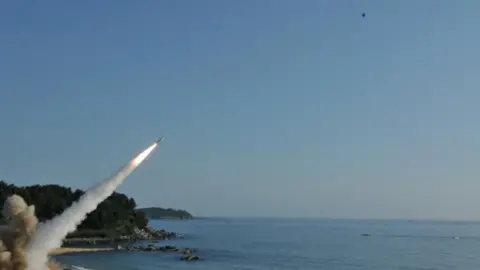
President Joe Biden’s apparent green light for Ukraine to strike Russia with US-made long-range missiles has caused consternation among some of Donald Trump’s allies.
Trump himself has not commented, but he won the election after promising to end the war – and several people close to him have condemned the move as dangerous escalation.
Biden has committed tens of billions of dollars to Kyiv’s war effort, and at the weekend he reportedly ditched a long-standing red line on Ukraine’s use of American weaponry to launch attacks deep into Russia.
Donald Trump Jr tweeted that the president was trying to “get World War Three going” before his father took office.

Biden’s decision has not been formally confirmed and it may never be.
When asked about how typical it would be for a presidential administration to take such a significant policy decision in its final months, State Department spokesman Matthew Miller said that Biden was “elected to a four year-term, not a term of three years and 10 months.”
“We will use every day of our term to pursue policy interests that we believe are in the interests of the American people,” he said. “If the incoming administration wants to take a different view, that is, of course, their right to do so.”
“There’s one president at a time,” he added. “When the next president takes office, he can make his own decisions.”
Ukraine’s President Volodymyr Zelensky said no such announcement was forthcoming – “missiles will speak for themselves”.
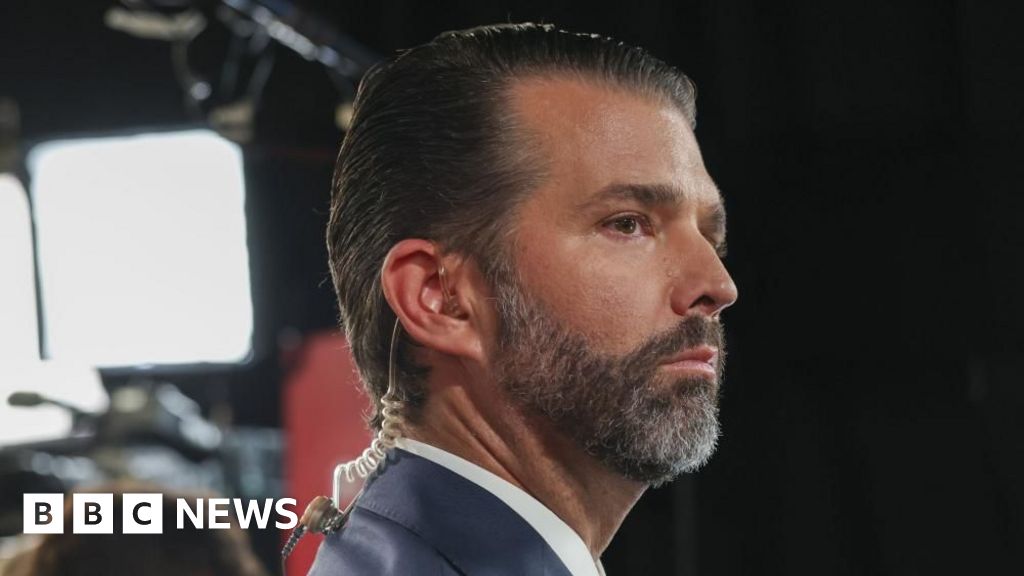
Trump’s camp is not pleased
Trump swept to victory on 5 November and is due to be back in the White House for a second term from 20 January next year.
Trump has campaigned on a promise to end the US involvement in wars and instead use taxpayers’ money to improve Americans’ lives.
He has said he will bring the Russia-Ukraine war to an end within 24 hours, without saying how.
One thing is certain, though: Trump has always seen himself as a dealmaker and will not want Biden to take any such credit.
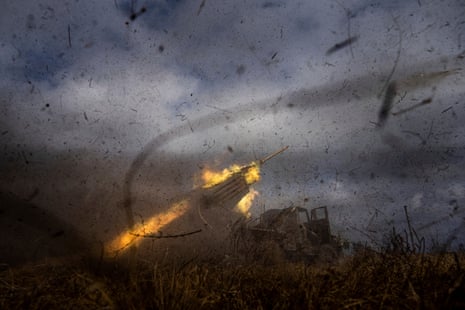
His son, Donald Trump Jr, was among the first Republicans to respond.
“The military industrial complex seems to want to make sure they get World War Three going before my father has a chance to create peace and save lives,” he said.
Another vocal Trump supporter, Congresswoman Marjorie Taylor Greene, condemned Biden, too.
“The American people gave a mandate on Nov 5th against these exact America last decisions and do NOT want to fund or fight foreign wars. We want to fix our own problems,” she wrote on X.
Not all of Trump’s allies, including some who advised him on national security affairs during his first term, shared this view – though they were critical of the Biden administration’s approach.
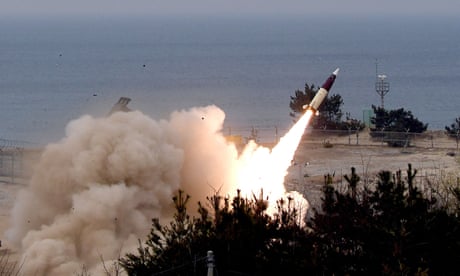
James Gilmore, who served as Trump’s ambassador to the Organization for Security and Cooperation in Europe, told the BBC that the main issue with Biden’s decision to provide Ukraine this new capability is that it came so late in the war.
“My criticism of Biden is the same as every other conservative and supporter of Trump – which is that the Biden administration slow walked this,” he said.
Gilmore said he did not know what the president-elect would choose to do regarding Ukraine once he entered office. “I don’t believe that he’s a man that usually walks away,” he said.
 Getty Images
Getty ImagesPolls suggest a large number of Republicans want US support for Ukraine to stop – 62% told a poll by Pew Research the US had no responsibility to support the country against Russia.
Senator JD Vance, who will be Trump’s vice-president, has regularly objected to providing arms to Ukraine. He argued that the US lacks the manufacturing capacity to continue providing weapons like the missile systems that Kyiv will use to strike within Russia.
Gilmore, however, said the US was able to backfill and upgrade its weapon systems through this process, but he said the US’s European allies would need to take on a bigger role.
“President Trump is exactly right about this – the alliance is stronger when Western European countries step up to the plate,” he said. “The United States cannot continue to act alone. The taxpayer won’t permit it, the next administration won’t permit it, and I wouldn’t, either.”
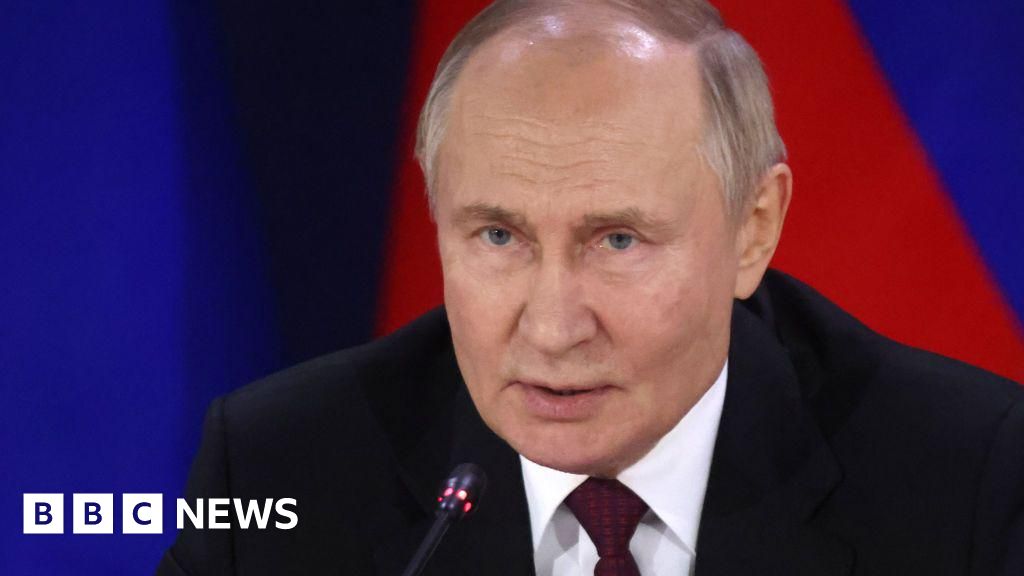
Putin is also silent
Since launching the full-scale invasion of Ukraine in February 2022, Russia’s president has been railing against the US-led Nato alliance – and described every pledge of military support by the Western allies for Ukraine as a direct involvement and warned of retribution.
His spokesman said on Monday that the US was “adding fuel to the fire”.
At times, Putin has mooted the possibility of using nuclear weapons, too.
Few believe this may come to pass as, under the mutual-destruction doctrine established during the Cold War when nuclear arsenals were built up, Putin knows their use would bring untold suffering to all, including Russians.

But the Russian leader will be fully aware of the magnitude of the threat of Western-supplied long-range missiles.
The Institute for the Study of War, a think tank, has published a map of 225 Russian military installations within range of ATACMS.
Former US envoy to Ukraine, Kurt Volker, said Biden’s decision would enable Ukraine “to go after airfields, the ammunition depots and the fuels supplies, logistics that Russia has, which right now are in a sanctuary zone in Russia”.
Biden’s decision will cause Russia to be more cautious, Volker told the BBC.
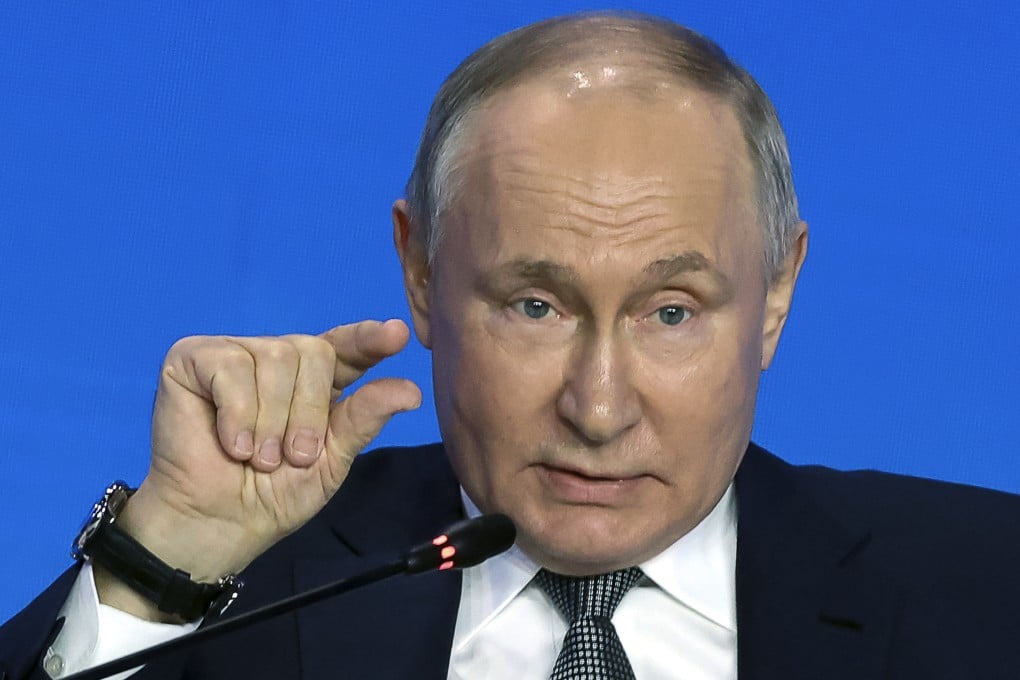
Dismissing Putin’s threats, he said the Russian leader “should have anticipated that there would be efforts by Ukraine to fire back”.
Ukraine has had ATACMS as well as UK and French Storm Shadow missiles of similar range for some time, though the numbers are not known. But it has not been allowed to use them inside Russia.
France and the UK are expected to follow the US lead and issue the same authorisation to Ukraine. So far, they have not commented.
White House officials are emphasising to US media that Biden’s change of heart is in response to Russia’s deployment of North Korean troops – a signal to Pyongyang not to send any more.
Gilmore, Trump’s OSCE ambassador, told the BBC that he believes it is “Putin who has escalated the war” by deploying North Korean soldiers, and the US cannot “just stand aside and let this dictator go ahead and conquer Ukraine”.
“I don’t like it and I take it all very seriously, but the decision is not ours. The decision is being forced upon us by Putin – by the dictator,” he said.
The move also follows a barrage of Russian attacks on Ukraine in recent days.
One strike on Odesa on Monday killed 10 people, including seven policemen, and injured 47 others.
Trump vows to use US military for mass deportations
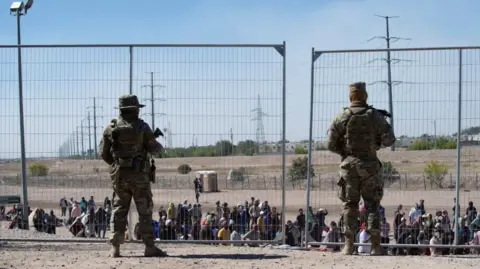
President-elect Donald Trump has confirmed on his social media network that he plans to use the US military to carry out a mass deportation of undocumented migrants.
On Monday, he posted “TRUE!!!” in response to a conservative commentator who wrote that Trump would declare a national emergency and use military assets to lead “a mass deportation program”.
At campaign events, Trump repeatedly pledged to mobilise the National Guard to assist Immigration and Customs Enforcement (ICE), the federal agency tasked with carrying out deportations.
Trump’s latest comment comes as questions grow about how he would fulfil his pledge to execute the largest mass deportation in US history.

He has repeatedly said he would begin deportations on his first day in office, which will be 20 January 2025.
But even if a US administration was able to legally move ahead with these plans, authorities would still have to contend with enormous logistical challenges.
For example, experts are doubtful that ICE’s 20,000 agents and support personnel would be enough to find and track down millions of undocumented migrants.
There would also be a major financial cost, but Trump recently told NBC News that this would not deter his administration’s efforts.
Trump’s post was made on his Truth Social network early on Monday as he continues to announce his nominations for key posts in his administration.
Trump has already chosen several loyal allies for top roles overseeing immigration and deportation policy, including Kristi Noem who has been nominated to lead the Department of Homeland Security, and former ICE chief Tom Homan who Trump has named his “border tsar”.
Trump’s team have so far released few details about how the plan will be executed.
He has previously said that he plans to declare a national emergency, which would authorise him to deploy troops on US soil.
Homan told Fox News on Monday that he will visit Trump’s Florida home this week “to put the final touches on the plan”, including deciding what role the US Department of Defense (DOD) will have.
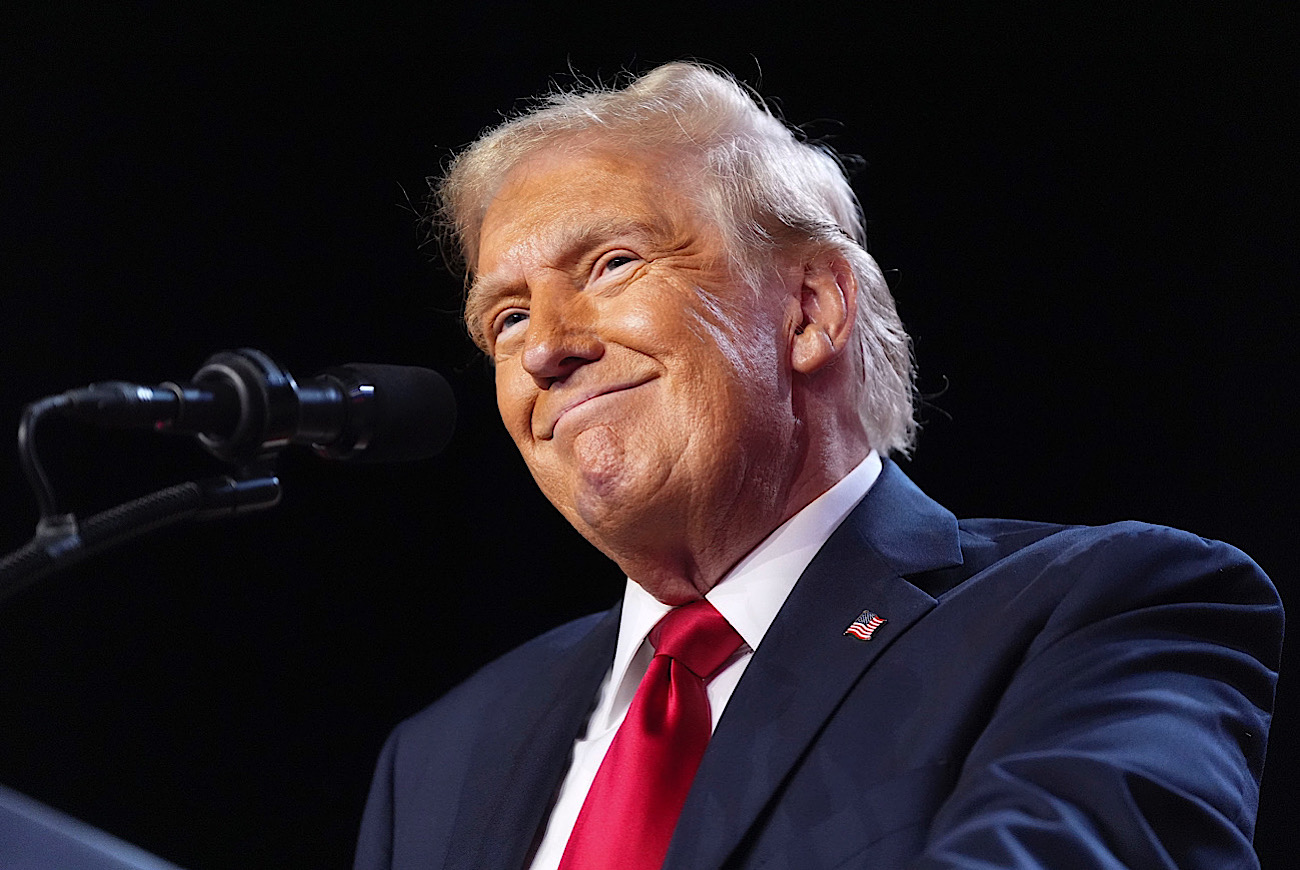
“Can DOD assist? Because DOD can take a lot off our plate,” he said, saying that the pace of deportations will depend on the resources agencies are given.
On Monday, the American Civil Liberties Union (ACLU) sued ICE for more details on how the deportation plan will work. The group plans to continue to file legal challenges in an effort to block the mass deportation.
Under the four years of the previous Trump administration, around 1.5 million people were deported, both from the border and the US interior.
The Biden administration – which had deported about 1.1 million people up to February 2024 – is on track to match that, statistics show.
How would Trump’s promise of mass deportations of migrants work?

US President-elect Donald Trump has doubled down on his campaign promise of the mass deportation of illegal immigrants, saying he plans to declare a national emergency and use the US military to carry out his plan.
The cost of doing so will not be a deterrent, Trump said, noting his priority upon taking office in January would be to make the border “strong and powerful”.
“It’s not a question of a price tag. It’s not – really, we have no choice,” Trump told NBC News earlier this month.
But how would Trump’s campaign pledge of mass deportations of migrants actually work and what are the hurdles he may face?
What are the legal challenges?
The latest figures from the Department of Homeland Security and Pew Research indicate that there are around 11 million undocumented immigrants currently living in the US, a number that has remained relatively stable since 2005.
Most are long-term residents – nearly four-fifths have been in the country for more than a decade.
Immigrants who are in the country without legal status have the right to due process, including a court hearing before their removal. A drastic increase in deportations would likely entail a large expansion in the immigration court system, which has been beset by backlogs.
Most immigrants already in the country enter into the deportation system not through encounters with Immigration and Customs Enforcement (Ice) agents but through local law enforcement.
However, many of the country’s largest cities and counties have passed laws restricting local police co-operation with Ice.
Trump has pledged to take action against these “sanctuary cities”, but America’s patchwork of local, state and federal laws further complicates the picture.

Kathleen Bush-Joseph, a policy analyst at the Washington-based Migration Policy Institute, or MPI, said that co-operation between Ice and local officials would be a “critical” aspect of any mass deportation programme.
“It’s much easier for Ice to pick someone up from a jail if local law enforcement co-operates, instead of having to go look for them,” she said.
As an example, Ms Bush-Joseph pointed to an early August declaration from the sheriff’s offices of Florida’s Broward and Palm Beach counties, in which they said they would not deploy deputies to help any mass deportation plan.

“There are many others who would not co-operate with a Trump mass deportation plan,” she said. “That makes it so much harder.”
Any mass deportation programme is also likely to be almost immediately met with a flurry of legal challenges from immigration and human rights activists.
A 2022 Supreme Court ruling, however, means that courts cannot issue injunctions on immigration enforcement policies – meaning they would continue even as the challenges work their way through the legal system.
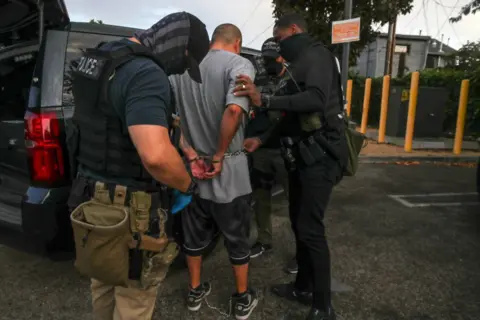 Getty Images
Getty ImagesBut can it be done, logistically?
If a US administration was able to legally move ahead with plans for mass deportations, authorities would still have to contend with enormous logistical challenges.
During the Biden administration, deportation efforts have focused on migrants recently detained at the border. Migrants deported from further inland in the US, from areas not located near the border, are, overwhelmingly, those with criminal histories or deemed national security threats.
Controversial raids on worksites that were carried out during the Trump administration were suspended in 2021.

Deportations of people arrested in the US interior – as opposed to those at the border – have hovered at below 100,000 for a decade, after peaking at over 230,000 during the early years of the Obama administration.
“To raise that, in a single year, up to a million would require a massive infusion of resources that likely don’t exist,” Aaron Reichlin-Melnick, policy director at the American Immigration Council, told the BBC.
For one, experts are doubtful that Ice’s 20,000 agents and support personnel would be enough to find and track down even a fraction of the figures being touted by the Trump campaign.
Mr Reichlin-Melnick added that the deportation process is long and complicated and only begins with the identification and arrest of an undocumented migrant.
After that, detainees would need to be housed or placed on an “alternative to detention” programme before they are brought before an immigration judge, in a system with a years-long backlog.
Only then are detainees removed from the US, a process that requires diplomatic co-operation from the receiving country.
“In each of those areas, Ice simply does not have the capacity to process millions of people,” Mr Reichlin-Melnick said.
Trump has said he would involve the National Guard or other US military forces to help with deportations.
Historically, the US military’s role in immigration matters has been limited to support functions at the US-Mexico border.
Aside from the use of the military and “using local law enforcement”, Trump has offered few specifics on how such a mass deportation plan could be carried out.
In an interview with Time magazine earlier this year, the former president said only that he would “not rule out” building new migrant detention facilities, and that he would move to give police immunity from prosecution from “the liberal groups or the progressive groups”.
He added that there could also be incentives for state and local police departments to participate, and that those who do not “won’t partake in the riches”.

“We have to do this,” he said. “This is not a sustainable problem for our country.”
Eric Ruark, the director of research at NumbersUSA – an organisation that advocates for tighter immigration controls – said that any deportation programme from the interior would only be effective if coupled with increased border enforcement.
“That has to be the priority. You’re going to make very little progress in the interior if that’s not the case,” he said. “That’s what keeps people showing up.”
Additionally, Mr Ruark said that a crackdown on companies that hire undocumented migrants would also be necessary.
“They’re coming for jobs,” he said. “And they’re getting those jobs because interior enforcement has basically been dismantled.”
 Getty Images
Getty ImagesThe financial and political costs
Experts estimate that the total bill for one million or more deportations would run into tens or even hundreds of billions of dollars.
The Ice budget for transportation and deportation in 2023 was $420m (£327m). In that year the agency deported slightly more than 140,000 people.
Thousands of immigrants would be detained while awaiting court hearings or deportations, and the Trump campaign has envisioned building large encampments to house them all.
The number of removal flights would also need to be dramatically expanded, possibly requiring military aircraft to augment current capacity.
Just a small expansion in any of these areas could result in significant costs.
“Even a minor change is in the tens of millions, or hundreds of millions,” Mr Reichlin-Melnick said. “A significant change is in the tens or hundreds of millions.”
Those costs would be in addition to the expense of other border enforcement efforts that Trump has promised: continuing work on a southern US border wall, a naval blockade to prevent fentanyl entering the country, and moving thousands of troops to the border.
Adam Isacson, a migration and border expert from the Washington Office on Latin America, said that “nightmarish images” of mass deportations could also cost a potential Trump administration politically from a public relations standpoint.
“Every community in the US would see people they know and love put on buses,” Mr Isacson said.
“You’d have some very painful images on TV of crying children, and families,” he added. “All of that is incredibly bad press. It’s family separation, but on steroids.”

Have mass deportations happened before?
Under the four years of the previous Trump administration, around 1.5 million people were deported, both from the border and the US interior.
The Biden administration – which had deported about 1.1 million people up to February 2024 – is on track to match that, statistics show.
During the two terms of the Obama administration – when Mr Biden was vice-president – more than three million people were deported, leading some immigration reform advocates to dub Barack Obama the “deporter-in-chief”.

The only historical comparison to a mass deportation programme came in 1954, when as many as 1.3 million people were deported as part of Operation Wetback, named after a derogatory slur then commonly used against Mexican people.
That figure is disputed by historians, however.
The programme, under President Dwight Eisenhower, ran into considerable public opposition – partly because some US citizens were also deported – as well as a lack of funding. It was largely discontinued by 1955.
Immigration experts say that the earlier operation’s focus on Mexican nationals and lack of due process makes it incomparable to what a modern-day mass deportation programme would look like.
“Those [deported in the 1950s] were single, Mexican men,” said MPI’s Kathleen Bush-Joseph.
“Now, the vast majority of people coming between ports of entry are from places that are not Mexico, or even northern Central America. It makes it so much harder to return them,” she added.
“Those are not comparable situations.”

:max_bytes(150000):strip_icc():focal(711x351:713x353)/meghan-markle-duchess-of-sussex-prince-harry-2025-Invictus-Games-Vancouver-021025-23480ec9918341968be0de8c087893a0.jpg?w=1200&resize=1200,0&ssl=1)



































:max_bytes(150000):strip_icc():focal(749x0:751x2)/rob-reiner-michelle-121525-fa6b3f711074498bbd85064cd8087ab6.jpg?w=1200&resize=1200,0&ssl=1)




